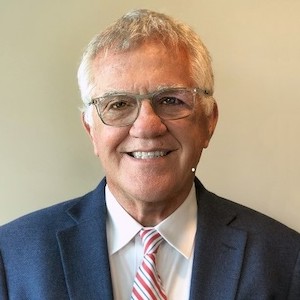 Rob Abel, Ed.D. | January 2021
Rob Abel, Ed.D. | January 2021
"Going to keep on trying 'til I reach my highest ground" —Stevie Wonder
A big shout out to the 1EdTech Contributing Members to start 2021!
It is a beautiful thing to strive to get better at what we do, the impact we have each new day. Right now, there are so many unsung heroes overcoming challenge after challenge from an unprecedented set of changing circumstances at all levels of education. Literally every day, the 1EdTech staff and I are inspired by 1EdTech community participants that are not only rising to the challenges of a pandemic but are finding insights that can be applied to make a better future. How inspiring it is to witness a partnership where a set of committed parties are working together over the long run to lift up all of edtech!
We have had some very insightful guest posts here on the Learning Impact blog in recent weeks:
If you take a few minutes to read them, you will gain useful insights and perhaps connect some dots in ways that are difficult to do in today's cluttered, headline-grabbing press and social media.
Insights from the 1EdTech community have always been the most valuable aspect of 1EdTech and 1EdTech membership. From back in the mid-1990s, when at Oracle, I was one of 1EdTech's early corporate sponsors. And it was clear then that 1EdTech attracted the type of leadership capable of shaping the future–both in terms of insights and the ability to act on those insights.
For edtech suppliers, 2020 was a difficult year for many, but also a banner year for some. In 2020, 1EdTech added a net of 40 new member organizations. We saw some notable "upgrades" in membership to the Contributing Member (CM) level. And, as we see every year, some members drop, and some members "downgrade" to an Affiliate or Alliance membership—mostly suppliers. Generally speaking, the institutional/DOE/system membership in 1EdTech is remarkably stable.
What does it mean to be a Contributing Member in 1EdTech? Why does 1EdTech have multiple levels of membership? What is the difference?
Simply put, Contributing Members are the leaders. They lead the close and committed collaboration under the fair and neutral auspices of 1EdTech, which is our not-so-secret sauce.
Fundamentally, 1EdTech is about building trusted partnerships among a coalition of committed parties–that are working honorably and transparently together–to help themselves and everyone else in the edtech sector.
Our CM organizations are school districts, state DOEs, universities, university systems, and suppliers. Their logos are on our member page (in the first section). CMs are the only organizations in 1EdTech that have a vote in the official proceedings of 1EdTech, and in return, are legally held to a very high standard of integrity. The leadership tier is very admirably balanced among supplier and end-user constituencies.
We have also found that CMs typically, although not always, have the executive-level commitment to be a leader for the long haul. When it comes to standards-based interoperability, commitment is so important. As I have written about many times, the temptations to deviate from standards, the business motives around dominant platforms, coupled with the extra effort required to coordinate with the rest of the market, actually make collaboration, especially over the long run, very, very challenging.
Why do Contributing Members provide extraordinary leadership in this collaboration? Well, the greater good is definitely an important factor. But the larger reason is that engagement in the community is worth the investment many times over.
1EdTech Contributing Members have fully bought into the proposition that we can do open standards well enough to reduce expense while improving opportunity for innovation.
But the value gained goes way beyond standards. It goes to the heart of defining the future of edtech, realizing that no one organization can do this alone.
When I came to 1EdTech as CEO in 2006, there was only the Contributing Member level. We added the Affiliate and Alliance memberships as a way for organizations that were not committed to leading the work to still benefit from a raft of resources that the CMs make possible and generate. 1EdTech's ultimate product—interoperability specifications—are all free and free to use. But the thought with the Affiliate and Alliance members was to add developer community resources and the ability to go through significant testing, resulting in certification, thus encouraging the plug-and-play ecosystem that the education sector requires to justify investing in standards in the first place.
We appreciate all 1EdTech members at all levels. We created the levels other than CM to do a better job at serving the broader edtech sector. But I wanted to dedicate this first post of 2021 to the Contributing Members because they demonstrate every day the executive leadership building the trusted partnerships required to achieve the future together. Working with an 1EdTech Contributing Member organization assures you that they are committed to the leadership needed to sustain, evolve, and accelerate the future of digital transformation in education.
At our core, 1EdTech only achieves what it achieves through an extraordinarily effective collaboration that lifts all to a higher ground. 1EdTech Contributing Members are the major participants and leaders in the extensive collaboration required to get all edtech stakeholders to the high ground of an interoperable digital edtech ecosystem based on open standards. I'm very proud that the 1EdTech community has, in fact, delivered on this value proposition—and continues to invest in ways to fulfill this promise even better in the future.


 January 2021
January 2021
